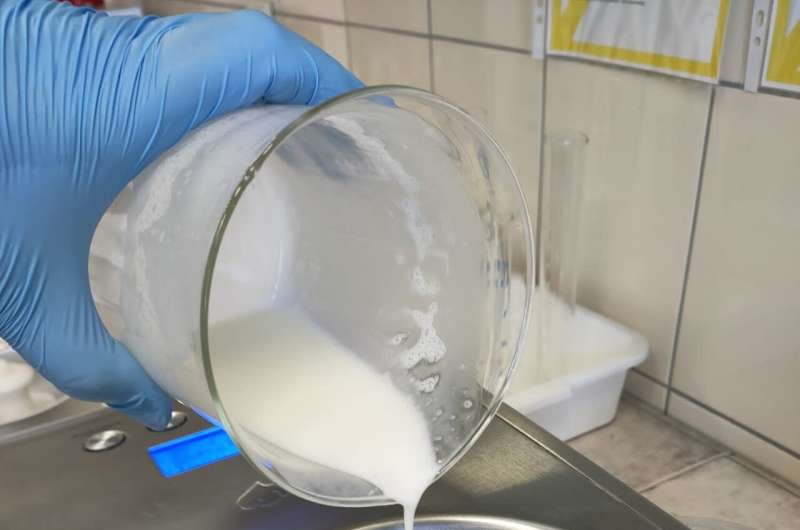Testing the viability of using horse milk to make ice cream

A team of food scientists at West Pomeranian University of Technology, in Poland, has found that using horse milk instead of cow milk to make ice cream is a viable food choice. In their study, published on the open-access site PLOS ONE, the group created four ice cream varieties using horse milk and different types of bacteria.
Traditionally, ice cream is made by adding cow's milk to cow's cream along with other ingredients. The result is a sweet treat popular around the globe. In this new study, the team found that replacing the cow's milk with milk from a horse and then adding it to cow's cream is a viable food choice.
Consumption of horse milk is not unheard of; many cultures around the world have used it instead of cow's milk for centuries—many of them believe it has yet-to-be-proven health benefits. Prior research has shown that it is closer in makeup to human milk than cow's milk and that people with allergies to cow's milk can safely drink horse milk.
Horse milk also has beneficial enzymes and proteins not found in cow milk, and it is lower in fat. Because of that, scientists have been looking into the possibility of using horse milk instead of cow milk in various food products.
In this new effort, the research team created four types of ice cream, all with horse milk instead of cow milk. In the first batch, they added yogurt bacteria; in the second they added both yogurt bacteria and inulin, a probiotic. In the third, they added a strain of bacteria called lacticaseibacillus rhamnosu, and in the fourth, they added a different strain of bacteria called lactiplantibacillus.
Testing of samples from each batch showed they were all similar regarding overrun and melting characteristics and in protein levels. They were also all found to be creamy and attractive—and they all had a good taste and texture, according to 60 volunteers who tasted the ice cream and gave their opinion, though the sample with both yogurt bacteria and inulin was found to have a slight acidic flavor.
More information: Katarzyna Szkolnicka et al, The use of mare's milk for yogurt ice cream and synbiotic ice cream production, PLOS ONE (2024). DOI: 10.1371/journal.pone.0304692
Journal information: PLoS ONE
© 2024 Science X NetworkVideo: Don't drink raw milk. But what about raw milk cheese?
No comments:
Post a Comment